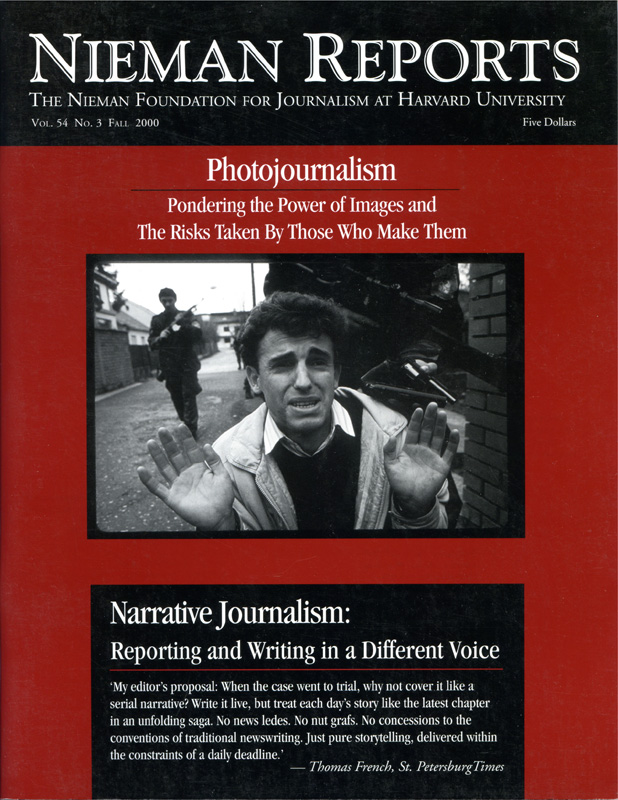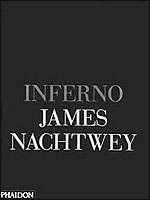“Inferno,” James Nachtwey’s new collection of photographs, is the most unbearable book I have ever looked through. His 382 black and white photos are so visually striking and so awful in the suffering, pain, inhumanity and death they show that many say such pictures are better not taken.
Some accuse Nachtwey of exploiting the suffering of others, of being a voyeur of the worst sort. I say, “Buy this book.” Give a copy to your library, to your synagogue or church if you have one, to every high school and college in the country. If you can’t endure looking at the photographs yourself, then at least you will leave it for others to confront, as you have, the horrors that humans are capable of enduring but also of perpetrating on each other.
His photographs do not offer solutions even as they starkly illuminate the brutalities that war and famine and other disasters create. Nor do these images explain the political complexities of the agony and despair and courage that they capture in Romania, Somalia, Sudan, Bosnia, Rwanda, Zaire, Chechnya and Kosovo. (The photos from India portraying the daily lives of “untouchables” seem misplaced in this book of horrors.)
But do images such as these need to perform these roles? Do photographs of human struggle need to do more than provide us a window through which we can witness what so often we shield ourselves from seeing? I think not.
“With ‘Inferno’ I am seeking a deeper and broader treatment of events—something with a narrative, cinematic quality; something that possesses not only a structure integral to the single image but also the connections between images…. It is an attempt to create a path that viewers can negotiate in order to come to a personal understanding of events by piecing them together from various moments and perspectives.” — NachtweyNachtwey is a stunning photographer. His photographs are beautiful, compositionally complex, almost too perfect. One wonders how he holds his camera steady, sets the exposure right, creates a striking, even elegant, composition when faced with a naked, starving man crawling towards an emergency feeding center as he did in Sudan? Or when he photographs disabled children in unbelievably degraded conditions in Romanian orphanages? Or when he lies next to a Chechen rebel shooting from a destroyed building on the frontline? As a photographer, I don’t know, but he does it, again and again.
The raw content of his photographs clashes with their controlled form and this magnifies how terribly disturbing they are. The book itself physically reproduces this clash. It is an expensive ($125), massive black book, weighing in at just under 10 pounds with huge photographs—many double spreads are a single picture just four inches shy of two feet long, gorgeously printed on creamy white paper. Given the vivid and horrifying content of the pictures, it isn’t surprising people react so vehemently to this presentation. Who would not shudder at the thought of looking at such images in what appears to be an art book?
But “Inferno” is not an art book. Nachtwey is bearing witness. With all the considerable intelligence and talent he possesses, he photographs the evil that might be within our power to correct. He cannot control our response or lack of one to his pictures. In the end, however, his book demands of us to look, to see what he has seen, to acknowledge the existence of these specific men and women and children. That is far from enough, but it is also far better than ignoring or forgetting.
Michele McDonald, a 1988 Nieman Fellow, is a freelance photographer based in Boston.
Some accuse Nachtwey of exploiting the suffering of others, of being a voyeur of the worst sort. I say, “Buy this book.” Give a copy to your library, to your synagogue or church if you have one, to every high school and college in the country. If you can’t endure looking at the photographs yourself, then at least you will leave it for others to confront, as you have, the horrors that humans are capable of enduring but also of perpetrating on each other.
His photographs do not offer solutions even as they starkly illuminate the brutalities that war and famine and other disasters create. Nor do these images explain the political complexities of the agony and despair and courage that they capture in Romania, Somalia, Sudan, Bosnia, Rwanda, Zaire, Chechnya and Kosovo. (The photos from India portraying the daily lives of “untouchables” seem misplaced in this book of horrors.)
But do images such as these need to perform these roles? Do photographs of human struggle need to do more than provide us a window through which we can witness what so often we shield ourselves from seeing? I think not.
“With ‘Inferno’ I am seeking a deeper and broader treatment of events—something with a narrative, cinematic quality; something that possesses not only a structure integral to the single image but also the connections between images…. It is an attempt to create a path that viewers can negotiate in order to come to a personal understanding of events by piecing them together from various moments and perspectives.” — NachtweyNachtwey is a stunning photographer. His photographs are beautiful, compositionally complex, almost too perfect. One wonders how he holds his camera steady, sets the exposure right, creates a striking, even elegant, composition when faced with a naked, starving man crawling towards an emergency feeding center as he did in Sudan? Or when he photographs disabled children in unbelievably degraded conditions in Romanian orphanages? Or when he lies next to a Chechen rebel shooting from a destroyed building on the frontline? As a photographer, I don’t know, but he does it, again and again.
The raw content of his photographs clashes with their controlled form and this magnifies how terribly disturbing they are. The book itself physically reproduces this clash. It is an expensive ($125), massive black book, weighing in at just under 10 pounds with huge photographs—many double spreads are a single picture just four inches shy of two feet long, gorgeously printed on creamy white paper. Given the vivid and horrifying content of the pictures, it isn’t surprising people react so vehemently to this presentation. Who would not shudder at the thought of looking at such images in what appears to be an art book?
But “Inferno” is not an art book. Nachtwey is bearing witness. With all the considerable intelligence and talent he possesses, he photographs the evil that might be within our power to correct. He cannot control our response or lack of one to his pictures. In the end, however, his book demands of us to look, to see what he has seen, to acknowledge the existence of these specific men and women and children. That is far from enough, but it is also far better than ignoring or forgetting.
Michele McDonald, a 1988 Nieman Fellow, is a freelance photographer based in Boston.




